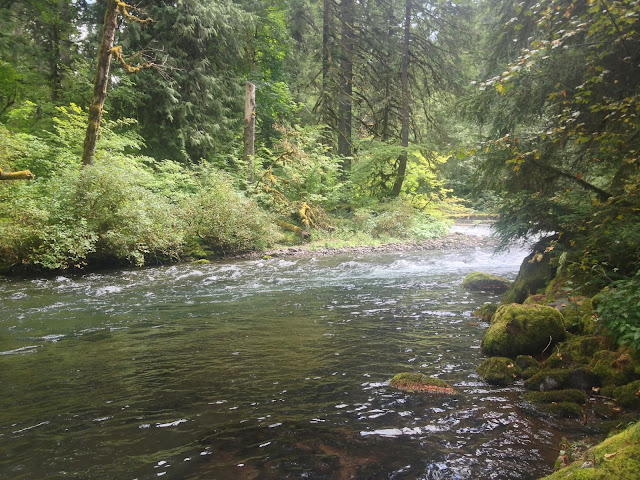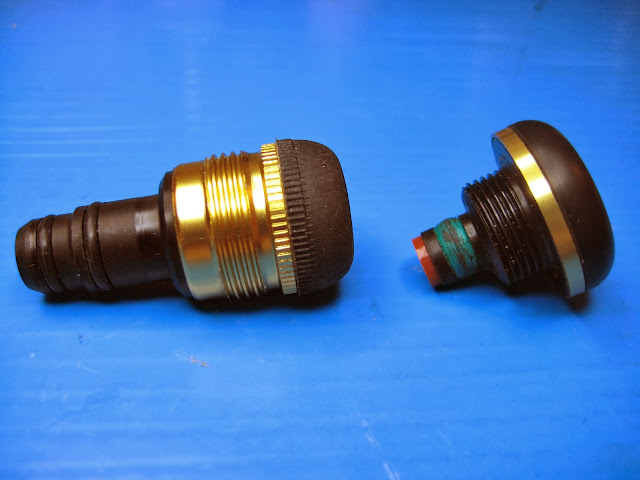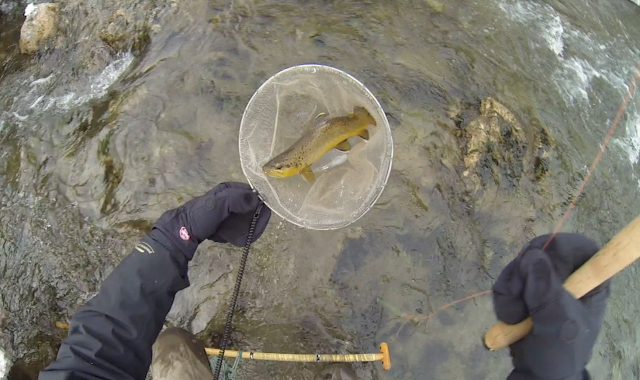As I look back, 2013 was a good year. I was able to fish quite a bit, 100 days during the year. But more importantly, I was able to go some places and fish some water that I have been wanting to for quite some time. I was able to fish and review about 30 rods and other various gear. That was fun. Also, I was able to make friends from all over the world through tenkara. Here is a quick recap of some of my favorite tenkara events from this year.

#10 Rods. I was able to fish with and review a number of rods. As you can tell by my posts, I like reviewing rods. I like fishing many different rods. I'd no sooner fish only one rod as I 'd fish only one fly. I'll be posting my annual rod review summary soon. It will run through all the rods I have used; what I liked and what I didn't.


#9 Wool Bodies Flies. This year I spent most of my fishing time on mountain streams fishing wool bodied flies. I fish mainly size #10-12 in three different colors. They all worked equally well.
#8 Standard Line Length. I fish upstream 90% of the time. And in doing so, I use fairly short lines. Most of the time I used a 10 foot #4 line or a 12 foot #3.5 line. On occasion I would use a 13 foot #3.5 line. Those have been my main lines this past year.
#7 Small Streams. One thing that I like about tenkara is that it opens up more waters to fish. I love small, tight streams. I find them very frustrating to fish, but I also find them very satisfying. Some of the waters I fished for the first time this year were merely 2 feet wide. They were such fun!
#6 Small fish. Many fishers target and delight in large fish. I think that is fine. This year I had two different favorite fish: a 14 inch native cutthroat taken from a mountain stream, and an 8 inch wild trout taken from a tiny mountain creek. I suppose they were my favorites not so much for the fish, but for the setting they were taken in and the effort it took to get to that spot.
#5 Coastal Cutthroat. I used to live in Oregon. When I was there I learned how to fly fish. Fly fishing was mental therapy for me at a stressful time in my life. I used to fish high mountain lakes in the Cascades but I always wanted to catch a coastal cutthroat. This year I had the opportunity to do just that. Even though I had only a few minutes on the water, I was able to fulfill that dream. Now I learn that my daughter and son-in-law will be moving to Oregon so I should have more opportunity to pursue that wonderful trout!
#4 Hammock Camping. I started using a hammock for my overnight adventures. Since I fish where there are trees I decided to try sleeping in a hammock instead of a tent. It is lighter and quite versatile. I'm still getting used to the difference between hammock and tent, but so far I like it.
#3 New Waters. As I mentioned before, I was able to go to some new waters this year. I had to hike cross country by compass/map and GPS to get to some of them. It was a great adventure and the fishing was good. I plan on doing more of this in the coming year.
#2 Friends. I usually fish alone. I always have. I like the freedom of going where I want, when I want and staying how long I want. But this past year I was able to fish with friends. This was new for me and I liked it. I'd like to try to do more of this.
#1 Family. Because of tenkara, I was able to do some fishing with my family this year. Being with them was as much fun as catching the fish. I hope to be able to do a lot more if this this coming year.
I look forward to this coming year and I wish the best for you as well. See you on the water!
*****

#10 Rods. I was able to fish with and review a number of rods. As you can tell by my posts, I like reviewing rods. I like fishing many different rods. I'd no sooner fish only one rod as I 'd fish only one fly. I'll be posting my annual rod review summary soon. It will run through all the rods I have used; what I liked and what I didn't.
*****


#9 Wool Bodies Flies. This year I spent most of my fishing time on mountain streams fishing wool bodied flies. I fish mainly size #10-12 in three different colors. They all worked equally well.
*****
#8 Standard Line Length. I fish upstream 90% of the time. And in doing so, I use fairly short lines. Most of the time I used a 10 foot #4 line or a 12 foot #3.5 line. On occasion I would use a 13 foot #3.5 line. Those have been my main lines this past year.
*****
#7 Small Streams. One thing that I like about tenkara is that it opens up more waters to fish. I love small, tight streams. I find them very frustrating to fish, but I also find them very satisfying. Some of the waters I fished for the first time this year were merely 2 feet wide. They were such fun!
*****
#6 Small fish. Many fishers target and delight in large fish. I think that is fine. This year I had two different favorite fish: a 14 inch native cutthroat taken from a mountain stream, and an 8 inch wild trout taken from a tiny mountain creek. I suppose they were my favorites not so much for the fish, but for the setting they were taken in and the effort it took to get to that spot.
*****
#5 Coastal Cutthroat. I used to live in Oregon. When I was there I learned how to fly fish. Fly fishing was mental therapy for me at a stressful time in my life. I used to fish high mountain lakes in the Cascades but I always wanted to catch a coastal cutthroat. This year I had the opportunity to do just that. Even though I had only a few minutes on the water, I was able to fulfill that dream. Now I learn that my daughter and son-in-law will be moving to Oregon so I should have more opportunity to pursue that wonderful trout!
*****
#4 Hammock Camping. I started using a hammock for my overnight adventures. Since I fish where there are trees I decided to try sleeping in a hammock instead of a tent. It is lighter and quite versatile. I'm still getting used to the difference between hammock and tent, but so far I like it.
#3 New Waters. As I mentioned before, I was able to go to some new waters this year. I had to hike cross country by compass/map and GPS to get to some of them. It was a great adventure and the fishing was good. I plan on doing more of this in the coming year.
*****
 |
| my friend Roger |
*****
 |
| My daughter and son-in-law |
 |
| my granddaughter and bluegill |
#1 Family. Because of tenkara, I was able to do some fishing with my family this year. Being with them was as much fun as catching the fish. I hope to be able to do a lot more if this this coming year.
*****
I look forward to this coming year and I wish the best for you as well. See you on the water!













































